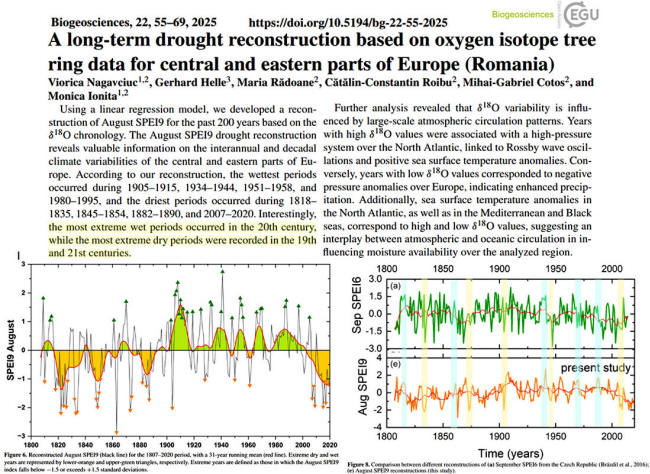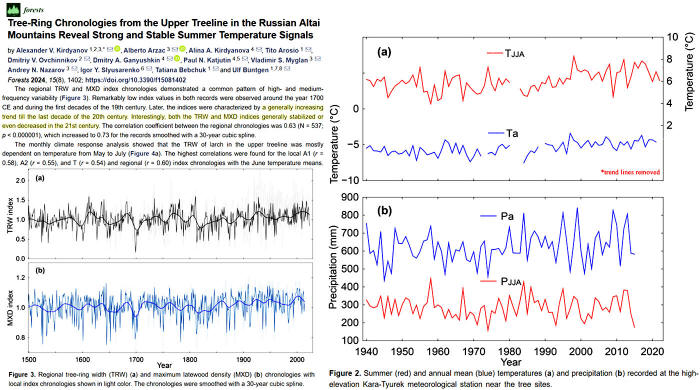1 - Anomalous Warm Temperatures
Recorded Using Tree Rings in the Headwater of the Jinsha River
during the Little Ice Age
SOURCE
A new 1606 to 2016 Central China winter (minimum) temperature
reconstruction (Jiang
et al. 2024) reveals,
cold periods only occurred in nine years of
the 1600s (1663-1672), but there were 71 years of cold periods
during the 20th century (1900-1942, 1959-1979,
1985-1994).
Notably, CO2 hovered around 278 ppm
during the 1600s and 1700s, but it rose from 290 ppm to 370 ppm
during the 1900s.
From 1650-1750, the winter temperatures in Central China were 0.44°C
warmer than they were during the 20th century.
The authors were surprised by this temperature result, as 1650-1750
falls within the timing of the
Little Ice Age.
"Surprisingly, during 1650-1750, the lowest
winter temperature within the research area was about 0.44°C
higher than that in the 20th century, which differs
significantly from the concept of the 'cooler' Little Ice Age
during this period.
This result is validated by the temperature
results reconstructed from other tree-ring data from nearby
areas, confirming the credibility of the reconstruction."
Finally, it should be noted that the year 1719
was 1.4°C warmer (-3.17°C) than the 1961-2016 average (-4.57°C).

Image Source:
Jiang et al., 2024
2 - A long-term drought
reconstruction based on oxygen isotope tree ring data for
central and eastern parts of Europe (Romania)
SOURCE
A new 1803-2020 Central Europe precipitation
reconstruction (Nagavciuc
et al., 2025) determines droughts were
more prolonged and pronounced during the 1800s than in the
1900s, as the 1900s were relatively wet.
Only one recent period (2007-2020)
endured extreme drought, but
it
did not exceed the severity of the 1818-1835, 1845-1854, and
1882-1890 drought years.
"Interestingly, the most extreme wet periods
occurred in the 20th century, while the most extreme
dry periods were recorded in the 19th and 21st
centuries."

Image Source:
Nagavciuc et al., 2025
3 - Tree-Ring Chronologies from the
Upper Treeline in the Russian Altai Mountains Reveal Strong and
Stable Summer Temperature Signals
SOURCE
Finally, another new precipitation and
temperature reconstruction (Kirdyanov
et al., 2024) from the Russian
Altai Mountains suggests,
"stable
summer temperature signals" since the 1500s, with no obvious
trend changes falling outside the long-term average.

Image Source:
Kirdyanov et al., 2024